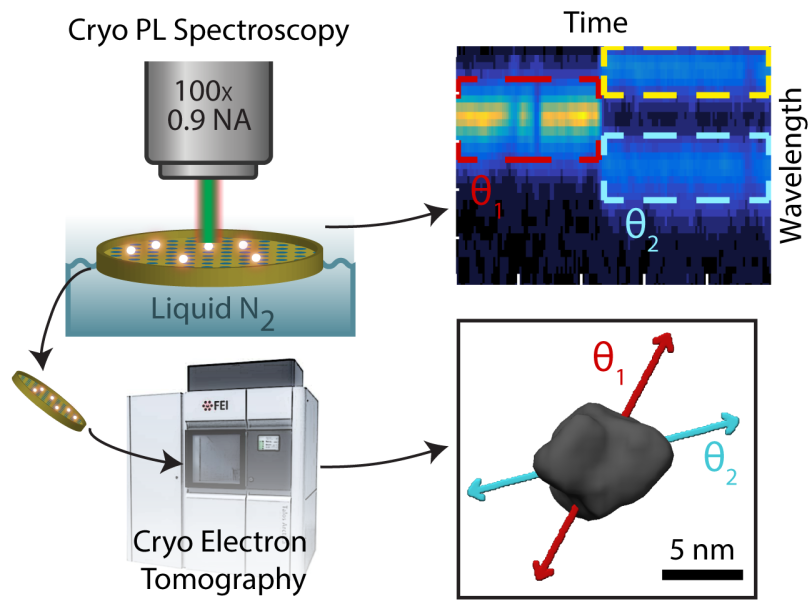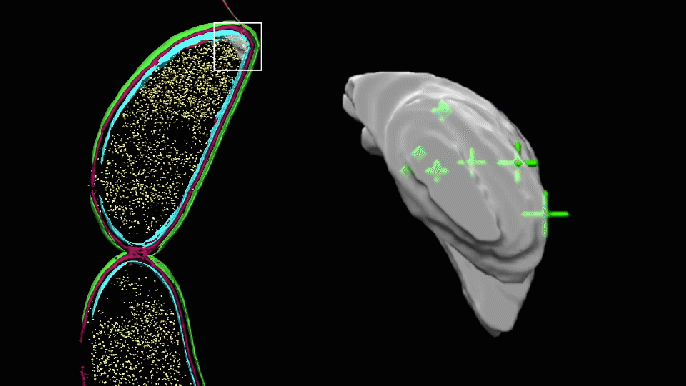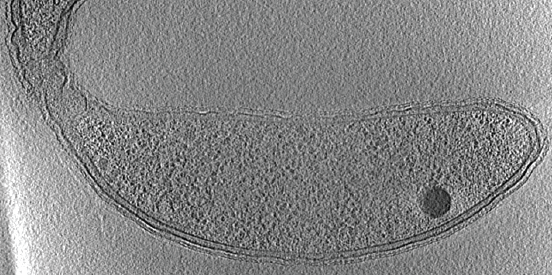Cryogenic correlative single-molecule spectroscopy and electron microscopy
Connecting electronic and physical structures
There is an interplay between electronic and physical structures. The positions of atoms in a fluorescent particle determine its excited state structure and dynamics. However, it is difficult to directly observe this relationship on the single-molecule level, but this one-to-one correspondence is critical due to the heterogeneity that is present in systems of any complexity. In these experiments we collect detailed single-molecule spectroscopy data under cryogenic conditions and then take the same samples into the electron microscope to perform tomography of the same single particles. Just finding the same particles in the two modalities is challenging and is analogous to finding a single blade of grass on a soccer field. The figure to the right shows the schematic overview to the technique. Cryogenic single-molecule spectroscopy provides information like emission spectra and dipole orientation (top images). CryoET (bottom images) provides physical structures, in this case a quantum dot (gray). Information from fluorescence, for example the transition dipoles (red and cyan arrows), can be visualized with the physical structure.
Key publications from our group:




